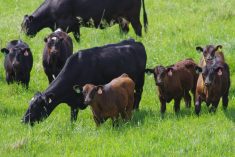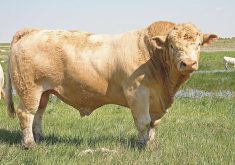“In the past, various subsidies have been the root cause of environmental/habitat destruction… These types of supports must be eliminated before we consider other supports for environmental protection.”
CLIFF WALLIS
ALBERTA WILDERNESS ASSOCIATION
Risk vs. gain, productivity vs. debt, innovation vs. tried-and-true– farmers make tough decisions between conflicting priorities on a daily basis. One such choice – maximizing your farm’s plant-able area vs. protecting sensitive environmental habitat – may soon get a whole lot easier if the Alberta government starts paying landowners to prioritize the environment.
Read Also

Grazing ‘sweet spot’ boosts pasture performance
Timing-focused approach to pasture management touted to boost forage growth, livestock gains while also cutting farmer labour and inputs
Many producers leave buffer zones around creeks and watersheds to retain wetlands, or to leave natural stands of timber on their properties. These choices benefit society at large as the intact natural environments provide important water and air quality benefits as well as vital habitat. Though the benefits are enjoyed by all, farmers currently carry the entire cost of lost productivity.
“People are always asking farmers to give and give. The simple fact of the matter is that we are a business. We can have all the environmental sustainability, but if we don’t have economic sustainability, we will fail,” says Humphrey Banack, president of Wild Rose Agricultural Producers.
He applauds the possibility of being paid to make choices that support environmental sustainability. “This is simply an opportunity to be recognized for something we already do. Most producers would be interested in the opportunity to participate in environmental stewardship if there was some kind of incentive attached to it.”
Land-use blueprint
The new Alberta Land-use Framework (ALUF) serves as a blueprint of economic, social and environmental priorities that will guide Alberta’s future land use and land development.
A key element says: “The Government of Alberta will support and encourage stewardship of private lands in Alberta through the development of applicable incentives and market-based instruments. The government will also consider new funding opportunities at the municipal level for stewardship and conservation initiatives on private lands.”
The ALUF is designed to outline priorities and provide approved options for land-use planning, only one of which is the concept of market-based incentives. Still, some see the very fact that the government has opened up the possibility of environmental payments to landowners is a step in the right direction.
The next stage of planning is the detailed regional phase. Seven Regional Advisory Councils (RAC) will put forth a series of recommendations to government regarding how each region’s land use priorities can be best achieved. Each individual RAC will determine whether it wants to recommend environmental payments to landowners for that particular region.
RACs will be convened sequentially around the province. The RAC working on the Lower Athabasca Regional Plan has already completed and submitted recommendations, and a second RAC is currently working on the South Saskatchewan Regional Plan. Once government reviews each Regional Plan, they will conduct public consultations to obtain feedback.
May take time
What is the likelihood of our seeing market-based environmental incentives?
“I’m an advocate of it. The point is valid, work is being done and it looks reasonably promising,” says Colin Jeffares, assistant deputy minister of Alberta Agriculture and chair of the South Saskatchewan RAC. “I believe we will end up there at some point, though it may take us some time.”
Jeffares is cautious about getting producer expectations up too high, too quickly. “If producers are expecting they can get a cheque next month or six months from now, I’d caution them,” he says. “There’s a whole bunch of work to do in term of creating infrastructure, creating protocols, having the ability to prove compliance, etc. It is being talked about, but whether it is workable, we’ll just have to wait and see.”
Jeffares says conservation on agricultural land is a “fairly significant piece, but there are lots of other regional issues vying for attention.”
Precedents
There are precedents that prove programs that pay producers for positively impacting the environment can be successful. A pilot environmental goods and services project is set to start in the Vermillion River area this summer, based loosely on a successful project in Manitoba. The strong uptake on Alberta’s no-till carbon offset program is another example.
Cliff Wallis, vice-president of the Alberta Wilderness Association, cautions that paying producers for environmental goods and services may not have enough environmental impact.
“In principle, we do not oppose such payments but think there are bigger concerns that need to be addressed first.”
Wallis says the whole system is geared to promoting increased production at the expense of wildlife, habitat and the environment, and there should be a holistic look at subsidies financing, land use zoning etc. to understand the effects of these on environmental protection.
“In the past, various subsidies have been the root cause of environmental/ habitat destruction,” Wallis says. “These types of supports must be eliminated before we consider other supports for environmental protection.”
Wallis opposes to any short-term supports for environmental protection. “These must be long-term, e. g. conservation easements with land use restrictions in perpetuity.”
Banack favours rapid action. “The longer we don’t do anything, the more environmental areas we’ll lose. We’re losing some each year and they can never be replaced.”














